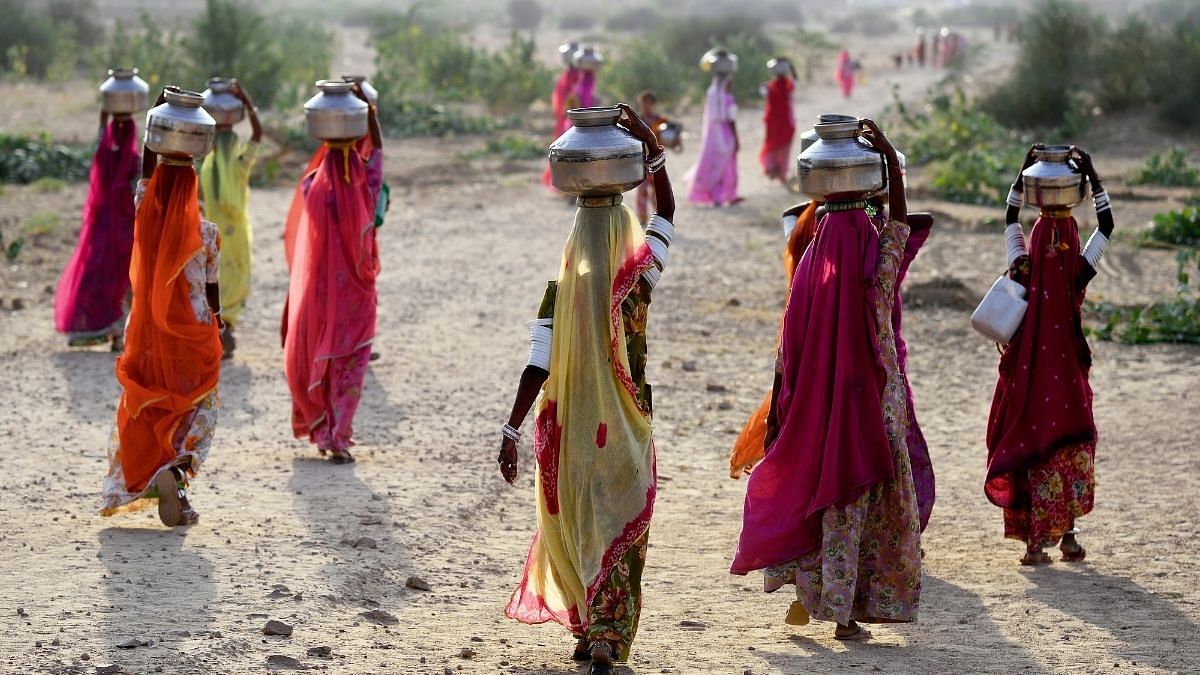More people around the world are facing humanitarian crises than ever before. About 274 million people will need humanitarian assistance in 2022, according to the United Nations Office for the Coordination of Humanitarian Affairs (OCHA). While challenges such as the COVID-19 pandemic, violent conflict, forced displacement and climate change affect humanity on a large scale, they disproportionately affect the most vulnerable, especially women and girls. They also highlight and aggravate existing gender inequalities in health.
The humanitarian crises of the past two years have created greater barriers for women and girls to receive needed health care, gender-based violence has increased, and educational opportunities have diminished. Therefore, the world needs humanitarian action directly informed by women and girls and leveraging the power of public-private partnerships. Such action is vital because women form the backbone of families, communities and economies around the world.
Humanitarian crises around the world
The significant increase in humanitarian aid needs is partly due to the COVID-19 pandemic. While the pandemic is a crisis in its own right, it also exacerbates co-existing crises.
Some of the most serious humanitarian crises exist in Africa, Middle East and South America:
- There is a conflict in northern Ethiopia as the Horn of Africa deals with food insecurity and malnutrition due to a historically long drought and locust infestation.
- Refugees are flocking to Sudan, which is also suffering the effects of flood and faminein addition to political insecurity.
- Drought conditions also affect Afghanistan, Yemen and Syria. In addition, these countries are grappling with economic crisis, political instability and conflict. Food insecurity in Afghanistan is also on the brink of famine.
- The people of the Democratic Republic of the Congo are living through complex and long-lasting crises. These include food insecurity, violent conflict and recurring epidemics, in addition to COVID-19. As a result, the country is experiencing massive forced displacement shift.
- More than 20% of Venezuelans – nearly 6 million people – have experienced forced displacement due to violence and economic and food instability.
- We have also observed in real time the development of a humanitarian crisis in Ukraine, causing forced displacement, a health crisis and food and economic instability. Almost 13 million Ukrainians were forced to leave their homes due to the invasion of the country earlier this year.
Disruption of health services
Women and girls around the world face barriers access to quality health care even in the absence of a humanitarian crisis. This is especially true of those living in rural and low-income areas. The COVID-19 pandemic and other humanitarian crises dramatically increase these barriers.
One of the barriers is the scarcity of quality health care services. According OCHA, mothers and children are most at risk where health services are shrinking. The World Health Organization reports that in 2021, around 90% of countries experienced disruptions to basic health services. More specifically, the International Rescue Committee expects the crises to cause the closure of more than 90% of health clinics in Afghanistan.
Humanitarian crises interrupt provision and use sexual and reproductive health care and information that makes women and girls vulnerable, according to the United Nations Population Fund (UNFPA). He found that maternal deaths in 35 countries facing humanitarian crisis or fragile conditions account for approximately 61% of all maternal deaths globally. This means that maternal mortality in these countries was 1.9 times higher than the global estimate.
The rise of gender-based violence
Gender-based violence is referred to as “shadow pandemic” – most recently in relation to its increase during the COVID-19 pandemic. As people were confined to their homes, prevention, protection and response services were interrupted or more difficult to use.
This phantom pandemic also occurs in other humanitarian crises. Specifically, an increase in gender-based violence has been noted over the natural disasters and it is also used as war weapon.
The education of girls and young women
When schools closed during the COVID-19 pandemic and children and young adults were sent home to self-isolate, education advocates worried about the impact on girls health and wellbeing. The school provides a safe and healthy environment for many children. Education is also an important part of the economic empowerment, self-reliance and even long-term health of women and girls.
There were also concerns about the number of girls returning to school after the closures. According OCHA, 127 million primary and secondary-aged children in crisis-affected areas were out of school before the pandemic caused schools to close. UNICEF estimates that boys are more likely to return to school in eastern and southern Africa after the worst of COVID-19 – while 11 million girls may never return to school according to UNESCO. More data needs to be collected now that most countries have reopened schools.
How to help with recovery
Humanitarian action is increasingly led and informed by the voices of women and girls. As more and more women and girls experience humanitarian crisis and the equality gap widens, it is imperative that this gender-sensitive approach continues to grow in order to change gender dynamics, policies and resource allocation. It also helps to ensure that women are protected and their leadership supported.
Finally, the inclusion of public-private partnerships in recovery efforts brings the combination of cross-sectoral knowledge, expertise and resources. the UN recognize the power of private sector engagement in humanitarian efforts. Combining gender-responsive approaches with public-private partnerships brings together two powerful models for dealing with the impact of humanitarian crises.
Healthy women and girls contribute to the well-being and productivity of their families, communities and countries. This causes a ripple effect that benefits everyone.
Laura GillespieProject Fellow – Women’s Health Initiative, World Economic Forum Geneva, Senior Director, Global Health Advocacy, Hologic
This article previously appeared in the World Economic Forum.
Read also : YouTube CEO says more work to do to tackle misinformation but pledges to respect free speech




